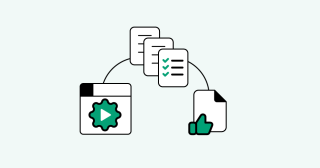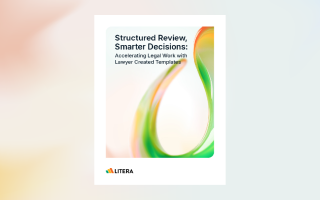How Do Drafters of M&A Agreements Value Individual Clauses? Kira’s Contract Analysis Software Supports New Research on Drafting Practices
Researchers from three leading law schools recently analyzed a large body of M&A agreements to try to learn more about how drafters value the various individual clauses that go into such agreements. Their innovative approach to the analysis relied in part on using Litera’s machine learning-based Kira software to extract 29 types of clauses from the contract database comprised of 2,141 merger agreements signed between 2000 and 2020.
The researchers are Adam B. Badawi, Professor of Law at the University of California, Berkeley School of Law; Elisabeth de Fontenay, Professor of Law at Duke University School of Law; and Julian Nyarko, Associate Professor at Stanford Law School.
Their starting point for the research was that understanding how lawyers draft agreements, and the relative importance that lawyers place on various common clauses, is difficult to measure empirically and directly. But they realized thatinformation about pending deals is sometimes leaked to the media or the public in advance of the completion of the transaction,and that can put pressure on legal teams to complete an agreement more quickly than might otherwise have been the case. The research team’s hypothesis was that lawyers dealing with a leaked transaction will prioritize the agreement terms that were most important to them and expend the most effort on those clauses. That prioritization of clauses when under a time press, compared with agreements executed without that pressure, would provide important insights about the terms on which lawyers in fact value the most.
But how to show that prioritization with data from the contracts? If the team could identify the transactions that encountered leaks prior to any official announcement about the deal, could they compare the resulting M&A agreements from those deals with agreements from “unleaked” deals, and identify differences in the drafting process?
To simplify their rather complex approach, the team was able to isolate transactions they identified as having likely been leaked. Knowing that most M&A agreements are created from existing templates, they used data analysis techniques to group agreements according to the common merger agreement template from which they derived. Then within each of those groups, they conducted a clause-level analysis to show thatthe text in the leaked deals was systematically closer to the text of the templates in the non-leaked deals. In other words, when lawyers faced a time crunch to get the deal done, there is less tailoring of the agreement’s terms.
But that analysis also showed that some types of clauses did not follow this pattern; for some types of clauses, the lawyers engaged in a similar amount of customization and editing regardless of the time pressure caused by leaks. That leads to the inference that the “tinkered-with” deal terms are most important to the lawyers, because that’s where they focused even when they were pressed for time.
As noted in the research paper, “The clauses that fall into this category are broadly consistent with practitioners’ intuitions about which deal terms are most important. They include thematerial adverse effect (MAE) clause, which allocates the risk of changes in business conditions between signing and closing; the ordinary course of business covenant, which governs the operation of the business until the merger is ultimately completed; and the termination rights of the parties in the event that a third-party bidder emerges or if there are regulatory complications. In contrast, more mundane clauses such as the choice of law and the requirement to comply with covenants are only tailored when there is ample time but areleft relatively untouched under pressure.”
The contribution of Kira to this research was in the extraction of specific clauses from the agreements in the sample. From the methodology note: “To expand upon the existing labels in our sample at comparatively low cost, we rely on Kira Systems (“Kira”). Kira is an automated contract analysis platform with several pre-trained classifiers for M&A agreements of high predictive quality. In total, we extract 29 types of clauses from the merger agreements in our sample using Kira.”
The study, The Value of M&A Drafting, was published in the Duke Law School Public Law & Legal Theory Series (available online through SSRN).
To understand the many other ways that legal teams use technology to enhance their work with transaction documents, see our eBook, Why Law Firms Leverage Technology to Draft, Review, and Analyze Transaction Documents, or reach out for a Kira demo.


